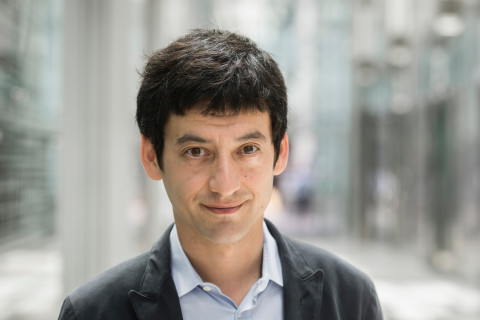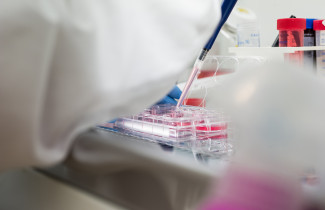“The open, interdisciplinary setup of the NEURO Research Community at UEF really formed the major draw for me to get involved,” says Simcha Jong, a new part-time professor at the University of Eastern Finland.
Neurological disorders are emerging as one of the major healthcare challenges of the 21st century. While life expectancy is being extended worldwide, it has also meant an increasing burden of non-communicable diseases and growing care needs.
“The burden of neurological disorders stands out. These disorders are now the second most common cause of death after cardiovascular diseases, and the leading cause of disability-adjusted life years globally. Yet, the pace of innovation and improvements in how we manage diseases such as Parkinson’s and Alzheimer’s have been frustratingly slow. Until this year, we for example went 18 years with no new drug being approved for the treatment of Alzheimer’s,” says Simcha Jong, Professor and Director of Science Based Business at Leiden University.
Simcha Jong now works as a part-time professor in the Neuro-impact and Innovation Research Team at the University of Eastern Finland.
“The open, interdisciplinary setup of the NEURO Research Community at UEF is quite rare and really formed the major draw for me to get involved. I really like the interdisciplinary approach and think it is critical to tackling this urgent challenge. That is why I joined this team.”
Re-designing health systems
Innovation in the neurosciences has been an increasing focus of Simcha Jong’s research group at Leiden University in the Netherlands over recent years. The expertise available at both Leiden and UEF raises exciting expectations for collaboration. Indeed, Simcha Jong is already laying the groundwork for projects in fields such as Alzheimer’s and epilepsy, some to be carried out in collaboration between the research groups in Leiden and at UEF.
“Leiden is one of Europe’s premier hubs for biomedical innovation. Two of the four COVID-19 vaccines currently approved for the European market are manufactured in Leiden. One – the Janssen vaccine – was developed there. My group is at the centre of this innovation hub, connecting research, education programmes, and knowledge exchange activities on the campus. I am for example leading an ERC project where we are studying the organisation of international R&D consortia in the neurosciences. My new collaborations at UEF will be a real boost for this agenda”, Simcha Jong says.
At UEF, Simcha Jong will focus on projects where he will contribute his expertise on how to re-design health systems to accommodate new, disruptive innovations such as those in precision medicine.
Much of the cutting-edge biomedical research in the neurosciences is about using genetic information and other biomarkers to identify patient groups that are at a high-risk of developing various types of Alzheimer’s. Soon, we may be able to design early intervention strategies to target these groups and halt disease progression – potentially even before patients develop symptoms.
According to Simcha Jong, preventative approaches in the management of Alzheimer’s will need to be accompanied by fundamental changes in the way health systems are organised. This will require input from many disciplines across the biomedical and social sciences.
“For example, it requires the design of new healthcare services and screening programmes geared towards early detection and prevention. We need healthcare management expertise about service design, epidemiological knowhow about how to optimise screening programmes and behavioural psychology expertise about how to change behaviour in healthy patients. We also need new payment models for healthcare, as it is often difficult to justify spending on medical interventions on healthy patients. This requires health economics analyses. Then there are ethical issues about under what conditions to tell healthy patients they will likely develop a fatal disease. An interdisciplinary approach is crucial.”
Long way from idea to market
The path from developing a health innovation idea to introducing it to the markets is long and requires collaboration.
“Typically, healthcare innovation projects I work on involve scientists, clinical practitioners, payer organisations, companies and patient advocacy groups. You really need all these voices around the table to support innovation in health systems,” Simcha Jong says.
Healthcare technology has developed tremendously during the past years, and today we have many devices for self-tracking and monitoring our health. However, Simcha Jong points out that the data collected via these devices may provide tech companies access to an intimate picture of our lives. He thinks there should be a more serious discussion about how to protect consumer health data. Another question is how to make data collected by health technology devices available to health care professionals.
“There is certainly value of these data for improving the management of neurological disorders, but the key is how you integrate these data into existing clinical trajectories and data infrastructures. Very little of the data that is collected by devices actually ends up in the hands of doctors and other professionals when we need to diagnose conditions or make decisions about treatments. That is not an easy thing to remedy and requires significant changes in how we use data in our health systems.”



